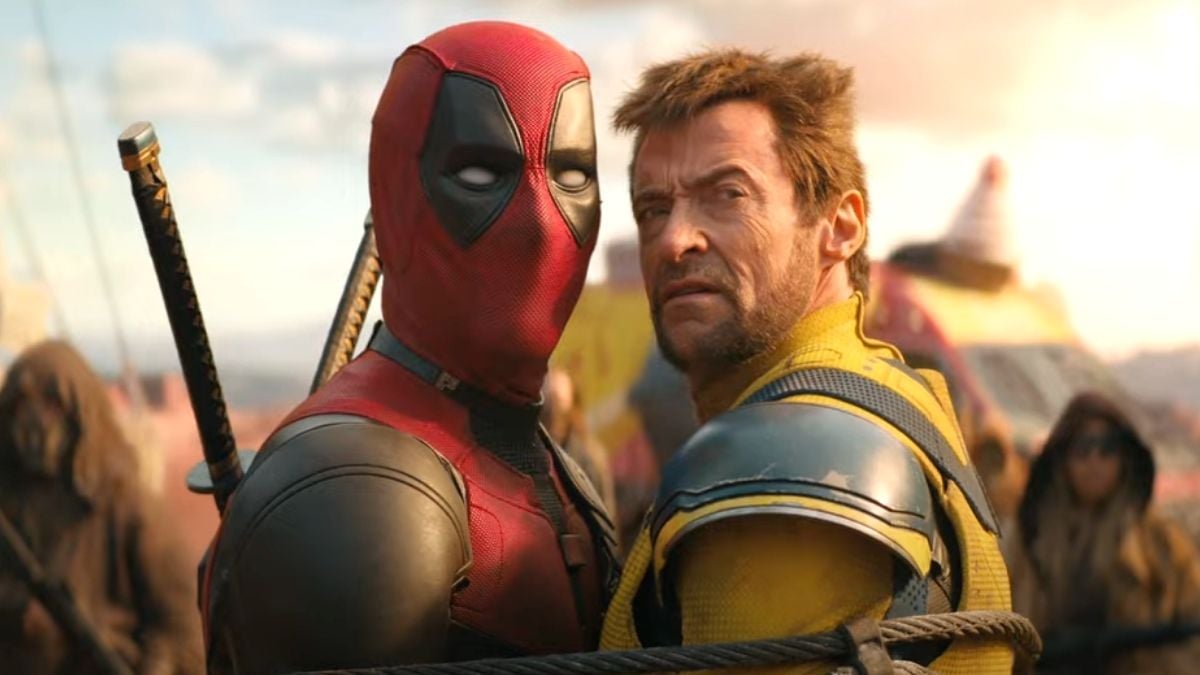James Bond was a publishing sensation as soon as the first novel reached bookstands in 1953. Each of the first three U.K. print runs of Ian Fleming’s first novel Casino Royale sold out within a month and earned the author a three-book deal. While it took a few editions for the series to make a mark in the U.S., Fleming had hit on publishing gold with his Bond stories. His tales of the British intelligence officer drew on the author’s experience in British Naval Intelligence during World War II, and within a few years, the books were bolstered by the Eon film series of which the last release was 2021’s No Time To Die.
The official film series diverged from the novels from the start, and if you’re familiar with 007’s cinematic exploits, then you may be surprised by Fleming’s source novels. Set in the 1950s and early 1960s, his books are very much of their time. While the films have contended with altered continuity and changing attitudes over the past half-century, some of the themes and descriptions Fleming used should be approached with caution by modern audiences.
Just as James Bond’s on-screen exploits weren’t ready to shut down in the mid-1960s, the books survived Fleming’s death in 1964. So far, the series has been continued in various styles and periods by eight authors. The Ian Fleming Estate even commissioned the spin-off series Young James Bond and The Moneypenny Diaries, although this list will target the official adult Bond novels.
Here is the ideal reading order for James Bond’s many appearances on the page.
Ian Fleming’s James Bond books

Fleming published a Bond book every year from 1953 to his death. When Dr. No became the first Eon film, it drew on the title and rough plot of the more recent 1958 novel, establishing a break from the novel continuity that would last. The movies would notably use this to their advantage, picking plot points from different books and assembling movies that responded better to cinematic trends. Examples include the Blaxploitation film riffs of 1973’s Live and Let Die and the Star Wars-inspired space fights of 1979’s Moonraker. However, the films would make memorable use of Fleming’s zinging titles up to 2008’s Quantum of Solace.
- Casino Royale (1953)
- Live and Let Die (1954)
- Moonraker (1955)
- Diamonds Are Forever (1956)
- From Russia, with Love (1957)
- Dr. No (1958)
- Goldfinger (1959)
- For Your Eyes Only (1960 ⏤ includes the short stories For Your Eyes Only, Quantum of Solace, Risico, and The Hildebrand Rarity)
- Thunderball (1961)
- The Spy Who Loved Me (1962)
- On Her Majesty’s Secret Service (1963)
- You Only Live Twice (1964)
- The Man with the Golden Gun (1965)
- Octopussy and The Living Daylights (1966 ⏤ includes the short stories Octopussy, The Living Daylights, The Property of a Lady, and 007 in New York)
Reading Ian Fleming’s Bond novels chronologically
Ian Fleming was famously vague on dates in his Bond books, although scholars have agreed that their chronology roughly follows their publication order. Some researchers, like John Griswold in his Annotations and Chronologies for Ian Fleming’s Bond Stories, have established a specific timeline for Fleming’s novels. If you’d like to read Bond’s original adventures in chronological order, including Fleming’s short stories with his novels, then this is the list for you.
John Griswold’s chronology for reading Ian Fleming’s novels

- Casino Royale — May to July 1951 or May to July 1952
- Live and Let Die — January to February 1952
- Moonraker — May 1953
- Diamonds Are Forever — July to August 1953
- From Russia, with Love — June to August 1954
- Dr. No — February to March 1956
- Goldfinger — April to June 1957
- Risico — October 1957
- Quantum of Solace — February 1958
- The Hildebrand Rarity — April 1958
- From a View to a Kill — May 1958
- For Your Eyes Only — September to October 1958
- Thunderball — May to June 1959
- Octopussy — June 1960
- The Living Daylights — September to October 1960
- The Property of a Lady — June 1961
- On Her Majesty’s Secret Service (Chapters 1-5) — September 1961
- 007 in New York — September 1961
- The Spy Who Loved Me (Chapters 10-14, the Bond section) — October 1961
- On Her Majesty’s Secret Service (Chapters 6-20) — November 1961 to January 1962
- You Only Live Twice — August 1962 to April 1963
- The Man With the Golden Gun — November 1963 to February 1964
After Ian Fleming

After Fleming died in 1964, his publishers posthumously released The Man with the Golden Gun and the short story collection Octopussy. To retain rights to the Bond character, they quickly commissioned Kingsley Amis to pen a sequel. Rare for a non-Fleming novel, the Eon film series subsequently picked up some of Amis’ plot points.
Also included in this list are the three notable bond fictions of the 1970s.
- Colonel Sun — Kingsley Amis, writing as Robert Markham (1968)
- James Bond: The Authorized Biography of 007 — John Pearson (1973)
- James Bond, The Spy Who Loved Me (novelization) — Christopher Wood (1977)
- James Bond and Moonraker (novelization) — Christopher Wood (1979)
John Gardner’s James Bond Books

John Gardner, an ex-Royal Marine commando, resumed the book series in 1980. Gardner retained the ages of Fleming’s characters but brought them forward to a contemporary 1980s setting. His novels achieved commercial success, although he didn’t have the same gift for book titles as Fleming. The extravagances of the film series naturally influenced these stories and some plots were criticized for being a little far-fetched.
- Licence Renewed (1981)
- For Special Services (1982)
- Icebreaker (1983)
- Role of Honour (1984)
- Nobody Lives for Ever (1986)
- No Deals, Mr. Bond (1987)
- Scorpius (1988)
- Win, Lose or Die (1989)
- Licence to Kill (novelization) (1989)
- Brokenclaw (1990)
- The Man from Barbarossa (1991)
- Death is Forever (1992)
- Never Send Flowers (1993)
- SeaFire (1994)
- GoldenEye (novelization) (1995)
- Cold (1996)
Raymond Benson James Bond Books

Raymond Benson was the first American to write for Bond on-page. Like Gardner and Fleming, he didn’t hang about, sometimes publishing multiple stories in one year. He was hand-selected by Ian Fleming Publications to take over from Gardner after writing The James Bond Bedside Companion in 1984 and contributing to the 1985 video game James Bond 007: A View to a Kill and 1986’s Goldfinger.
Although the setting remained contemporary, Benson stripped away Gardner’s continuity and returned to Fleming’s habit of penning short and long-form Bond stories.
- Blast From the Past (short story) (1997)
- Zero Minus Ten (1997)
- Tomorrow Never Dies (novelization) (1997)
- The Facts of Death (1998)
- Midsummer Night’s Doom (short story) (1999)
- High Time to Kill (1999)
- Live at Five (short story) (1999)
- The World Is Not Enough (novelization) (1999)
- DoubleShot (2000)
- Never Dream of Dying (2001)
- The Man with the Red Tattoo (2002)
- Die Another Day (novelization) (2002)
Recent Bond Books

In 2008, the Ian Fleming Estate moved original Bond novels in a different direction, opening them to well-known literary authors such as Sebastian Faulks. By dispensing with internal continuity, this arguably freed the book franchise as much as the movie series. Authors have demonstrated their flexibility in style and setting, ranging from the 1950s to the present day.
While Carte Blanche brought Bond to a contemporary setting, Solo is set after Fleming’s continuity in 1969. Anthony Horowitz took over the series in 2015 and has published two novels, set in 1957 and 1950, respectively.
Devil May Care — Sebastian Faulks (2008)
Carte Blanche — Jeffery Deaver (2011)
Solo — William Boyd (2013)
Trigger Mortis — Anthony Horowitz (2015)
Forever and a Day — Anthony Horowitz (2018).
James Bond will soon return, as Anthony Horowitz’s next 007 novel is due out in 2022.











Published: Jan 14, 2022 01:34 pm